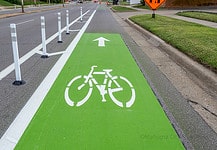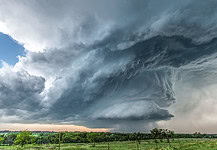Last Updated on December 1, 2023, 10:34 AM | Published: November 30, 2023
OKLAHOMA CITY — After several years of proposals and slow-moving progress, and after nearly three years since functional plans were first unveiled, Oklahoma City’s first-ever Bus Rapid Transit (BRT) line – running from Downtown OKC to NW Expressway & Meridian – is finally opening to the public on Sunday, December 3rd.
The first official passenger-loaded runs on the 3rd will kick off a full month of free rides intended to help acclimate and educate not only passengers, but also the motorists, pedestrians, and cyclists with which the new busses will be sharing the road.
Questions remain about potential popularity, public interest, long-term viability, and timing consistency, as well as about what EMBARK – the city’s public transportation authority – could be doing to better prepare and educate city drivers in advance of the public service’s launch.
But what seems certain is that the BRT (dubbed simply “the RAPID” by transit officials and branding) is going to affect how you engage with city streets, no matter how you get to where you’re going.
RAPID Riders: Fewer Stops, More Amenities
The Bus Rapid Transit system, with its fleet of busses all following the same nineteen-mile round-trip route, is designed to function essentially as an above-ground subway, and indeed has even been referred to by OKC Mayor David Holt as “the closest we will ever get to a subway in Oklahoma City.”
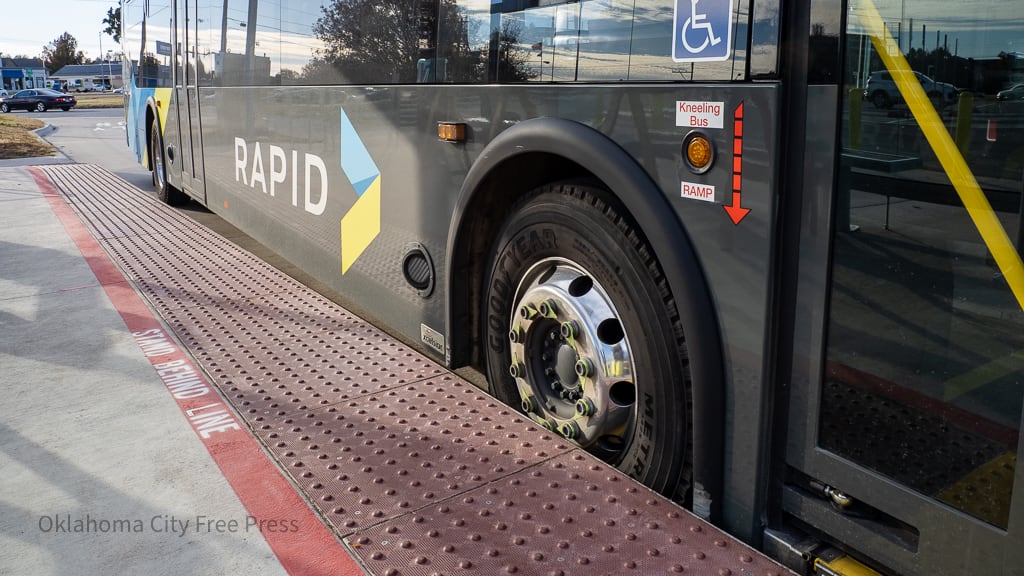
That means fewer stops, more amenities, shorter loading times, and targets for dramatically reduced wait times between buses.
At each BRT station, passengers can expect:
– A new bus scheduled to arrive every 12 to 15 minutes during peak times throughout the day, and every 20 to 30 minutes during off-peak and nighttime hours.
– Off-board ticketing kiosks required for purchasing RAPID tickets before the bus arrives. RAPID buses are not equipped to handle cash.
– A targeted boarding time of just 20 seconds at each stop.
– Real-time route information and updated wait times.
– Elevated, level boarding designed to make boarding for disabled passengers faster, easier, and safer.
– All stations have bike racks.
– There are two “park & ride” stations: NW Expressway and Meridian with free spaces for up to 50 cars, and the Century Center Parking Garage Downtown with paid spaces for up to 800 cars.
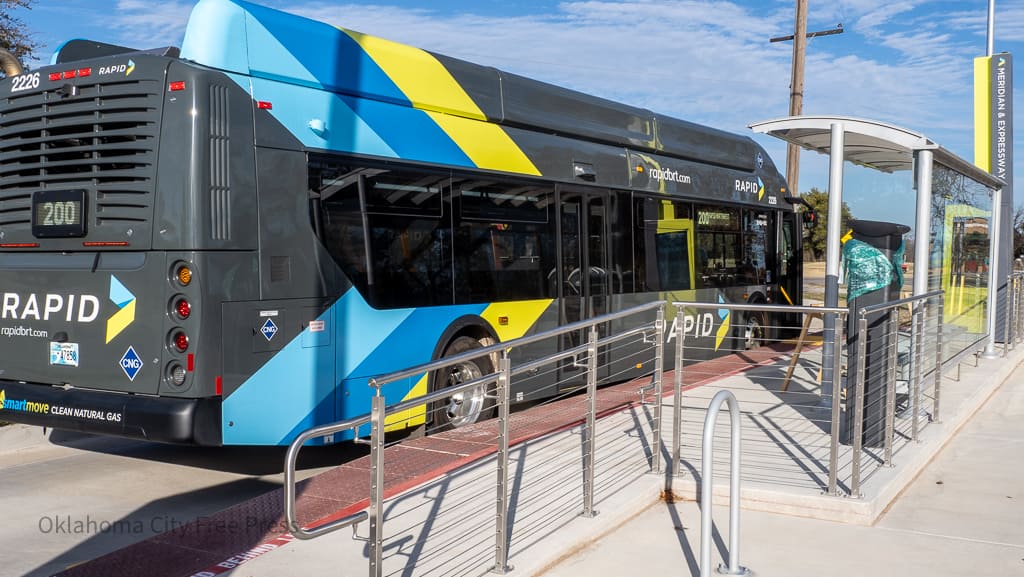
Once aboard the busses, passengers can expect:
– Fewer stops, with just 32 stops along the complete 19-mile round-trip route.
– Less time spent at stoplights, with the BRT running on a Transit Signal Priority system designed to hold green lights longer in order for BRT busses to pass through intersections faster.
– WiFi and USB charging ports.
– Low-emission vehicles with buses running on compressed natural gas.
City Drivers: Sharing the road with the BRT
While most of the differences between the new BRT and existing city bus services seem like major improvements and ease-of-use upgrades for riders, it’s looking like the drivers and motorists that will be sharing the road with the buses will see the most adjustment and potential complication.
Chief among those adjustments will be navigating the new bus-only lanes that are meant to be reserved for the BRT vehicles.
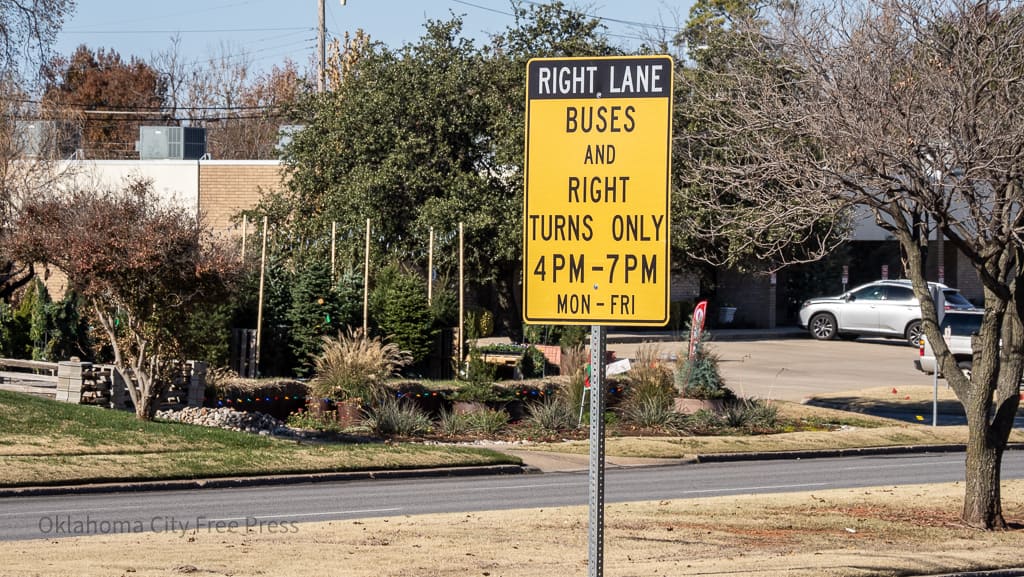
These dedicated bus lanes will be seen on:
– Classen between NW Expressway and NW 16th St.
– NW Expressway between Independence and Classen.
The lanes are meant to remain open and unimpeded for the sake of RAPID buses and will be equipped in many cases with bus-priority stoplight signals, but officials say they can still be used by motorists for passing, business access, and quick right turns.
Official guidance according to EMBARK promo materials is “Don’t Linger.”
There’s no word yet on what penalties or punitive measures will be taken by police and traffic authorities to ensure the exclusivity of the lanes, nor is there yet any clearly definable determination of what will constitute lingering in the lanes.
Like existing laws regarding highway passing lanes, individual discretion will likely be used to determine if a motorist is impeding the busses.
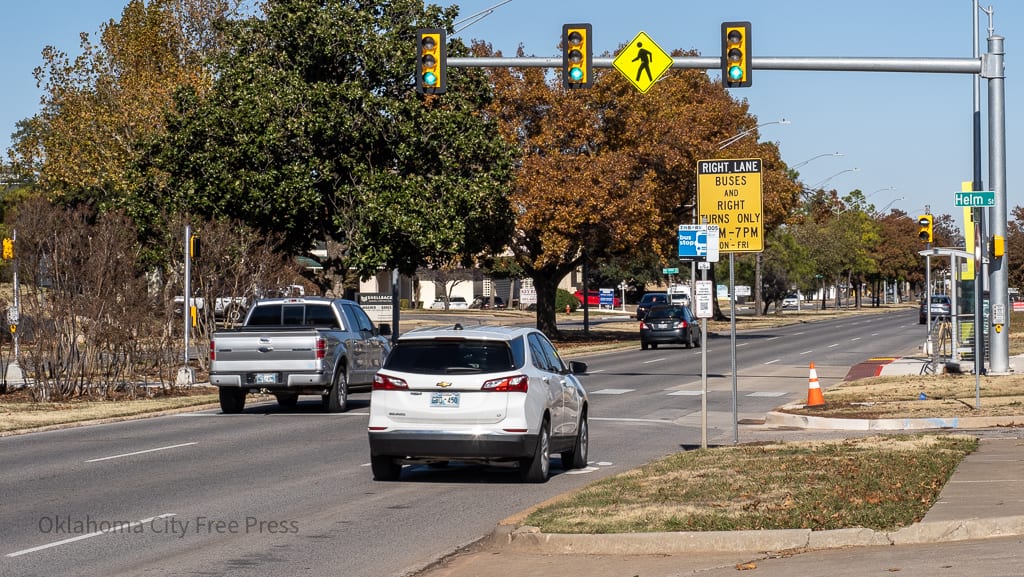
Another change will see drivers potentially held for longer at certain intersections, such as the pedestrian crosswalk near NW 42nd and Classen where the new Transit Signal Priority system will hold traffic for longer, giving the busses time to cross three lanes in just six blocks without navigating traffic.
Social media comments on EMBARK promotional posts about these changes have already voiced some frustration from city drivers, so some public pushback against these new adjustments seems probable.
Biking/Walking: Pedestrians and the BRT
Officials say the primary goal of the BRT is to help create a more walkable, bikeable city that’s less reliant on individual cars for working commuters.
As such, part of the BRT planning and development also involved expanding and redesigning bike lane and sidewalk access along the BRT route to provide better flow and safety for cyclists and to promote walking or biking to stations to then travel on the RAPID.
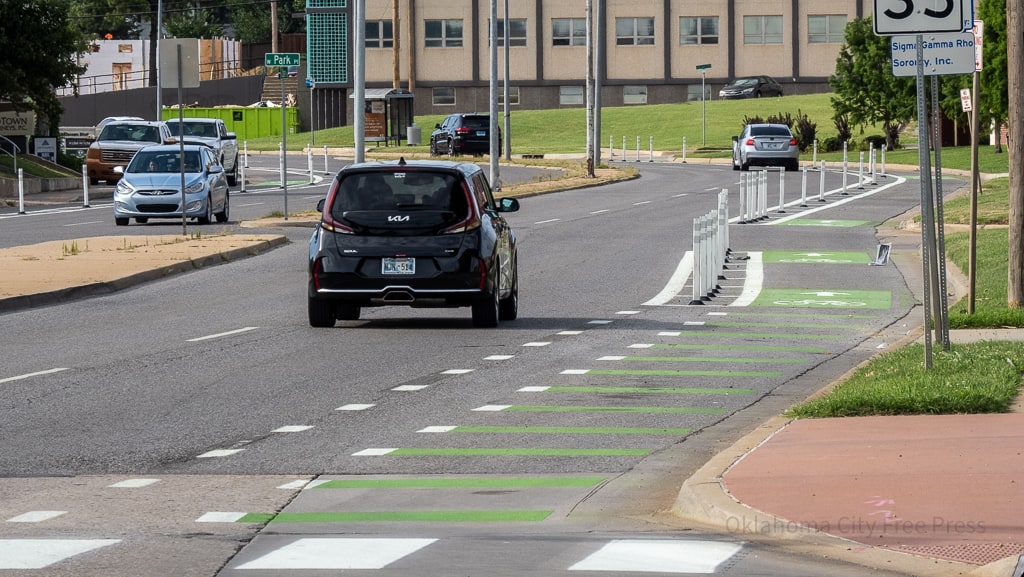
On Classen, for example, new bike lanes were predominantly the work of the BRT planning, with bike lanes routed behind the new BRT stations to improve flow and safety for cyclists, and new sidewalks constructed along the BRT route throughout the city were a required part of the plans as well.
Of course, buses will still be required to turn across the new bike lanes in certain areas, which will impede cyclists. Additionally, some in the local biking community have lamented that many of the new BRT-constructed bike lanes don’t currently connect to any other protected lanes on streets not on the BRT route.
Free Fare through December
Time will tell if OKC residents embrace the RAPID in ways not yet seen for public transit in the city, with the deciding factor likely being the system’s ability to maintain its targeted speeds and remarkably low intended wait times.
EMBARK is banking on a month-long free trial period to get residents excited about – and accustomed to – the idea of regular commuter transit with $0 fare from December 3rd through January 1st.
Beginning January 2, 2024, regular RAPID fare will be $1.75 per ride, with discounts available for seniors, students, and qualifying disabilities.
Passengers can also use the Token Transit app on their smartphone to pay the fare before arriving at a station and simply board, scan, and ride.
Brett Fieldcamp has been covering arts, entertainment, news, housing, and culture in Oklahoma for nearly 15 years, writing for several local and state publications. He’s also a musician and songwriter and holds a certification as Specialist of Spirits from The Society of Wine Educators.






